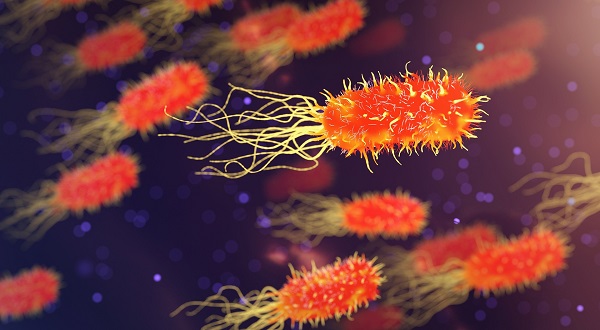Biostatistics, which happens to be among the highest-paying master’s degrees, is a field that brings value to any area of scientific study involving living organisms. One major area of biostatistical application is epidemiology, the scientific study of the distributions, determinants and control of disease in a population. Epidemiologists rely on the research methodologies and quantitative analysis techniques of biostatistics to identify causes and risk factors of diseases, study disease in certain populations and evaluate the outcomes of medical treatments.
Identifying Causes and Risk Factors of Diseases
IMAGE SOURCE: Pixabay, public domain
One of the main reasons for using biostatistics in epidemiology is to pinpoint the causes and risk factors associated with a disease or another medical condition. Before you can begin working to prevent disease – or even effectively treat it – you need to have some idea of what is causing it. Otherwise, there is no way to be sure that the measures you are taking to attempt to avoid or mitigate the disease won’t just make it worse. It makes sense, then, that epidemiologists would be concerned with the question of what causes diseases.
Figuring out the cause of a disease is often challenging. After all, there are numerous factors that apply to any person who is diagnosed with a disease. Age, weight, family history, co-occurring conditions that may or may not be relevant and known environmental exposures are just a few of the factors that may apply. Those factors may not all be pertinent to the disease or disorder the person developed or to the time or severity they developed it.
In the case of some diseases, there are a lot of unknowns. A patient may have been exposed to a carcinogen or other potentially hazardous substance without knowing it. People may have a genetic mutation that makes them more susceptible to the illness – like the BRCA1and BRCA2 gene mutations that researchers have linked to breast cancer – but never knew about it because it never caused them any problems before.
To answer these questions, epidemiologists use biostatistical methods to collect data pertaining to the disease and the factors they are studying. They want to use a large amount of data, often gathered over a considerable amount of time, and to acquire information from which they can make meaning. For example, researchers may need to know not just whether exposure to a potential toxin or carcinogen occurred but also how much, how often and how long ago that exposure happened. Epidemiologists often have to rely on observational studies of patients diagnosed with the condition they are researching, since they can’t perform experimental studies as might occur in other fields.
One of the biggest difficulties in determining the cause of disease is differentiating between causation and correlation. A correlation may show a relationship between a disease and a potential risk factor being studied, but figuring out if that factor is actually what makes the disease develop is more difficult. A correlation might really show nothing more than two outcomes that both result from a yet-unknown cause, or it may be a simple coincidence. It takes extensive research to ascertain that a relationship between a medical condition and a risk factor is, in fact, causal.
These causes and other factors are what the term “determinants” refers to in epidemiology, according to the CDC.
Gaining a Better Understanding of Health Conditions Among Populations
Diseases don’t strike all populations equally, and investigating the reasons why is another aspect of epidemiology. Why do some illnesses disproportionately affect certain age groups, races and sexes?
Again, understanding the “why” of diseases is an important step in treating them and even preventing them. One goal of studying the health of a population is to learn the distribution of diseases, which includes the frequency with which they occur and the patterns they follow within that population. Unlike doctors and other types of clinicians, epidemiologists are less concerned with the treatment outcomes of one individual patient and more concerned with matters affecting the larger population, the CDC reported. Those matters may include figuring out the cause of an illness, predicting its potential spread and analyzing the most effective ways to prevent additional disease spread. In some instances, data gained by studying one population can also provide some insights applicable to treating or preventing diseases in the general population.
Many epidemiologists focus on research on a particular population, such as older adults and infants. For the purposes of epidemiology, populations can also refer to geographical areas, especially when studying environmental exposures.
Studying the Outcomes of Medical Interventions
The principles and methodologies of biostatistics also come in handy when evaluating medical treatments. How effective is a medical intervention? What are the risks of adverse effects? Clinical trials and studies are used to answer these questions scientifically. Instead of just guessing or hoping that a new drug, a surgical procedure or another type of intervention is effective, clinical trials evaluate and quantify its efficacy. Clinical studies that are well-designed according to biostatistical methodologies typically acquire data that can be used to determine not only whether the intervention works but also how well it works and, often, how well it works in comparison to other interventions.
Epidemiologists are not biostatisticians, but they share a common goal of seeking quantitative answers to health questions. Generally, epidemiologists approach this task from a background in studying disease, while biostatisticians have a statistics background.
Additional Resources
How Much Writing Will I Do in a Job as a Biostatistician?
Are There Areas Other Than Public Health That Hire Biostatisticians?

